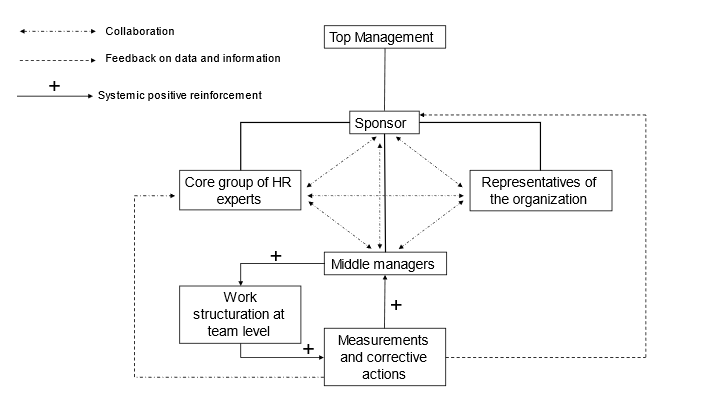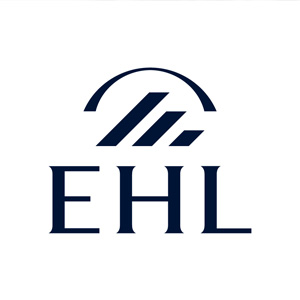In the first part of a mini series on toxicity in the workplace, we explore the linkages between toxic work environments and employee turnover. These relationships exist at multiple levels, including the destruction of positive work values, undermining of trust and individual confidence, limitations to the individual development of employees and, last but not least, high stress levels leading to employee burnout.
We concluded the previous part on a somewhat pessimistic note, highlighting many reasons why toxicity is hard to remove from the workplace. These include the persistence of negative values in the organizational culture, the individual dangers for those who stand up against toxic leaders and the hard choices to make for top management when they are faced with leaders who deliver business results at the expense of a toxic work environment.
In this second installment, we turn towards a more positive perspective. We outline what we believe to be a pragmatic framework for purging organizations from toxic elements. The “detoxification” of an organization takes time and requires implementing a well-orchestrated systemic approach. We summarize the linkages in this approach in the figure below. Successful implementation of this approach requires integrating several key components and each element plays a specific role in this process of cultural transformation.
Top Management
In organizations where detoxification works effectively, top management is committed to cultural transformation, advocating positive values such as integrity, respect, transparency, and a sense of accountability among managers. Corporate-level commitment is essential in setting the tone and actively supporting the initiation of a detoxification process. Without explicit role modeling by a top management team that “walks the talk” a process of detoxification may be doomed out of the blocks.
A sponsor legitimized by top management
This sponsor, chosen from top management ranks, is designated as the “steering agent” of the detoxification project. His or her role is to act as a catalyst for change by trickling the detoxification process down the organization through a concrete set of actions. The sponsor must act as liaison agent with a core group of experts from the human resources (HR) department and launch an open call to embark on this “detox’ mission” with a group of volunteers representative of the organization.
A core group of HR experts
The sponsor must then enlist the support of experts within the HR department, brief them on the long-term purpose of the detoxification process, and make sure to get HR’s authentic buy-in. The sponsor and HR must then set up interventions, such as Anonymous Reporting Systems (ARSs), that allow employees to report toxic behaviors without fearing reprisal. ARSs prove particularly effective in mitigating the risks of speaking up against toxic managers, especially for lower-level employees. As importantly, the sponsor and the HR core group must ensure that ARSs are well-publicized throughout the organization and that appropriate actions are taken in response to reported toxic behaviors.
A group of volunteers representative of the organization
Made up of a dozen or so employees from various functions and hierarchical levels, this group must work with the sponsor and HR experts to draw up a Charter of Kind Behaviors, the guidelines of which can be spelled out in a “Booklet of Kind Behaviors” to be distributed throughout the organization. In change management terms, this steps allows for the empowerment of broad-based action throughout the organization.
Middle managers as guarantors of kind behaviors and healthy work structuring
Identified by the sponsor for their exemplary work ethic, a handful of middle managers can play a crucial role in the detoxification process. On the one hand, they must ensure that kind behaviors are maintained within their team, implementing, for example, regular 360-Degree Behavior Anonymous Reviews that include input from every member (including the team manager). On the other hand, these managers need to act on certain key components of the work structure, which are frequently factors in stress, discord between team-mates, and (in the long term) burnout, i.e., overall workload and tight deadlines, conflicting job demands, role unclarity, lack of employee empowerment and role ambiguity. By simultaneously monitoring the structuring of work and the behaviors of their team members, these middle managers help to establish positive localized subcultures in the organization's various departments and divisions. This managerial approach has a "multiplier" effect through behavioral mimicry, as it is passed on from managers to employees (some of whom will become managers one day). And so a hopefully virtuous circle begins…
Measurements and corrective actions
In keeping with the adage "what cannot be measured cannot be managed", what we have described above cannot be achieved unless specific metrics are established to measure progress in detoxifying the organizational culture. We recommend using the following metrics:
- The employee satisfaction rate measures the overall satisfaction of employees through regular surveys to assess the impact of changes on their well-being and commitment.
- Employee retention rates are useful to indicate whether employees feel valued - or conversely "devalued" - and, therefore, more inclined to stay with (or resign from) the organization.
- The number of reports of toxic behavior formally captures the number of deviant behaviors or violations of the ethical behavior charter. A reduction in these incidents may indicate an improvement in the organizational climate.
- Tracking staff participation in training programs measures the rate of participation in training programs on positive management, conflict resolution, and other behavioral skills.
- Collecting feedback on internal communication provides information on the quality and effectiveness of formal internal communication channels set up to report deviant behavior.
- Individual performance appraisals for managers (and employees) should include criteria related to ethical behavior, as this is beneficial to promoting a healthy culture over the longer term.
- The measurement of team productivity must be assessed in relation to their specific objectives while taking into account changes in work structuring; this provides information on the impact that work structuring has on the internal functioning of teams.
The figure below illustrates the integrated nature of our approach and highlights some essential feedback loops leading to positive reinforcement of the process.







